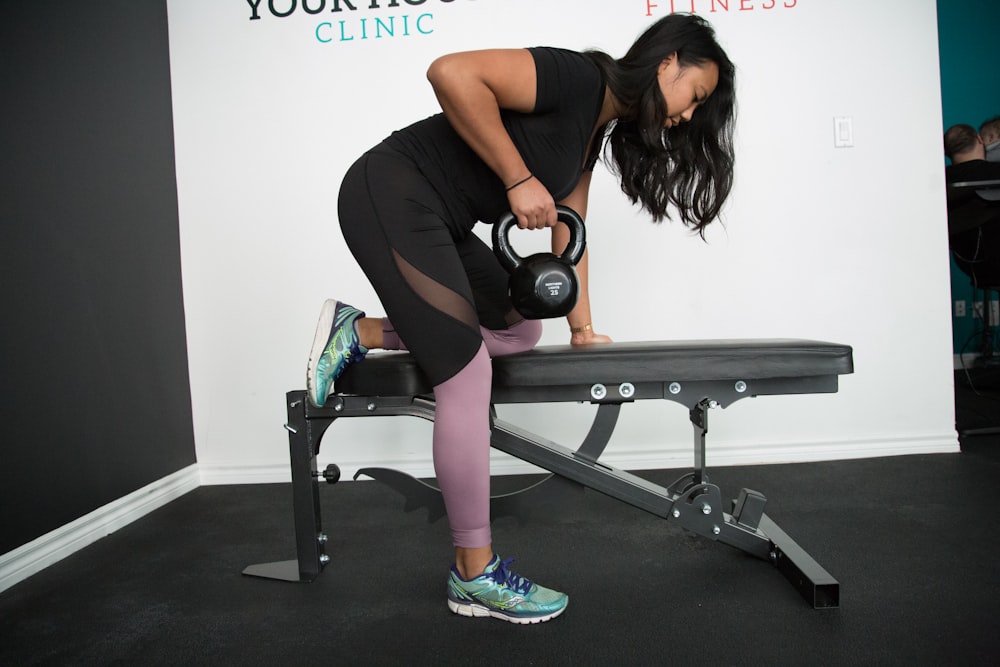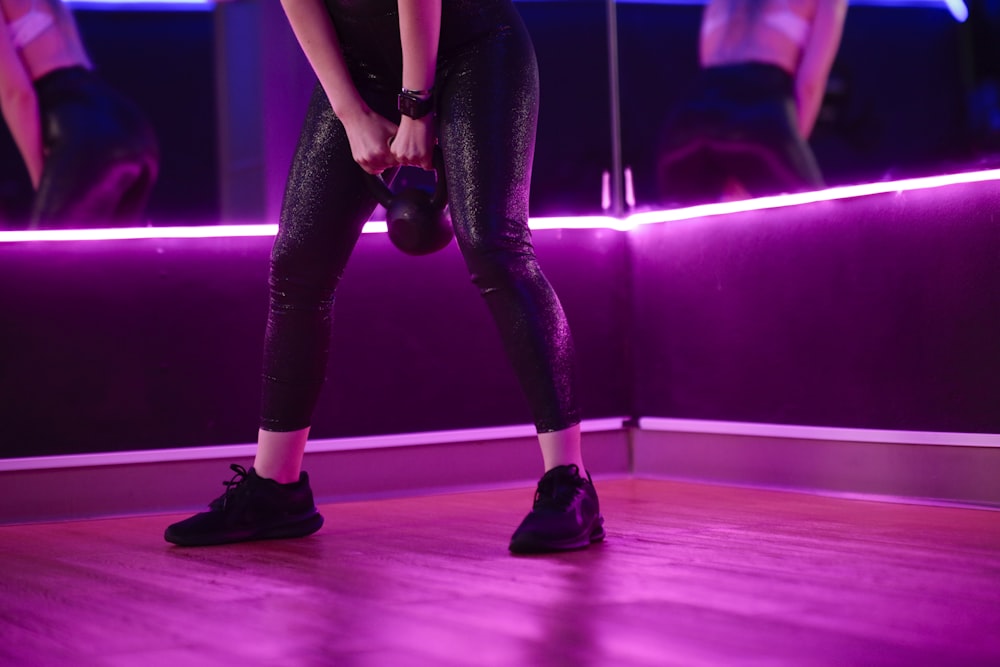
Kettlebells are a great investment for any home gym, for anyone wanting to tone their body and get better results. Kettlebells are great for those wanting to increase strength, power, endurance, and explosivity.
Both dumbbells and kettlebells are at-home weights that are useful in a home gym because their small size makes them just as functional in a small apartment as they are in a gym. They’re also very easily portable for those outdoor workouts in the park.
According to nutrition coach and mobility expert Karl Bratland, “Kettlebells are a great addition to any workout program due to their versatility. Most kettlebell movements require full-body strength, coordination, and mobility. Using kettlebells also allows you to address strength and muscle asymmetries in the body, as you can do unilateral movements. In comparison to dumbbells, they require more stability with many movements due to the weight sitting below the handle. The handle of a kettlebell can also accommodate one or two hands, whereas dumbbells really cannot.”
Unlike dumbbells, which are wider and that you grip in the middle, kettlebells are rounded weights with a handle (shaped much like a tea kettle). Think of a round, metal ball with a handle sticking out from the top. Their alternative shape allows them to be held in many different ways, which is exactly what makes them so versatile. The way a kettlebell is held allows for exercises that emphasize quick, explosive movement as well as more frequent and faster repetitions.
A kettlebell snatch is a perfect example: kettlebell snatches work your core, build strength in your lower and upper body, and consist of quick, repetitive explosive movements that increase power endurance and raise your heart rate. Single-leg kettlebell deadlifts are a fantastic leg, glute and core exercise.
Some other examples of workouts that utilize kettlebells include:
- The kettlebell swing, which strengthens the muscles that make up your posterior chain
- Kettlebell thrusters combine squats with an overhead press to work the various muscle groups in your whole body
- Kettlebell farmer walks to improve your grip strength while gently working your upper back and core.
Whatever your fitness goals are, kettlebells can help you get there. Read on to find out what benefits kettlebells can bring to your workout routine.

Kettlebells Strengthen Your Forearms
The handle of a kettlebell is usually a bit thicker than that of a dumbbell, which actually helps to improve your grip strength. What’s more, kettlebell workouts often involve maneuvering the weight, which challenges you to change your grip while maintaining momentum. In addition to improving your grip, maneuvering the kettlebell strengthens the muscles in your forearms, an area that is difficult to isolate and is often overlooked.
Manipulability
Their odd shape makes kettlebells extremely versatile, enabling you to combine several moves into one fluid motion, activating multiple muscle groups and working several areas at once. This means you can accomplish more in a shorter amount of time and with less equipment, perfect for busy days and small spaces.
Great for HIIT workouts
Kettlebells are a favourite piece of equipment among HIIT athletes because of their versatility and compact size. HIIT (high-intensity interval training) workouts often combine strength and cardio and can be completed in as little as 20 minutes. Combining strength training with a cardio workout builds endurance while simultaneously teaching your muscles to better use oxygen.
Kettlebells Improve your Range of Motion
Using kettlebells gives you the chance to be creative by holding weight at different angles and from various positions, which challenges you and improves your range of motion. Many kettlebells workouts incorporate swings, and presses, which move muscle groups through their entire range of motion, instead of the relatively short up and down or side to side movement typically associated with dumbbells or barbells.
Kettlebells can help you Improve your Form
Holding kettlebells can help you perfect your form and build a strong foundation for movement. Kettlebells are especially useful for training yourself to squat properly. Many struggle with balance while performing a squat, which makes it challenging to perform the exercise properly and can lead to muscle strain or sprain, ligament deterioration or pinched nerves. One way to counteract this is by performing a goblet squat instead, using a kettlebell as a counterweight. As your strength increases, back squats with increased weight can then be re-introduced.
Improve your Core Strength
Again, the versatility of the kettlebell is one of its main strengths. It’s incredibly easy to add overhead presses to almost any other move that uses a kettlebell, which is a great way to work your core. By extending your arms, you’re forcing your deep core muscles into activation, and the added weight works your shoulders and upper back.
Improve Your Posture
Maintaining good posture is important for any strength training exercise, as it allows you to get the most benefit and decreases your chance of injury. It’s especially important to focus on keeping your body stable while performing workouts that incorporate movement, which many kettlebell workouts do. Consistently performing exercises that depend on holding good posture will lead to good posture even when you’re not working out.

Help Correct Muscular Imbalances
Many kettlebells exercises can (and should) be performed unilaterally, meaning one side at a time. Performing unilateral movements force your muscle groups on either side to work independently. For example, while performing a chest press with a barbell, it’s easy to rely on your stronger side to get you through it, often without you even noticing. This can lead to a muscular imbalance that can negatively affect your posture.
Improve Hip and Glute Strength
Many of us sit at a desk for hours at a time, which weakens our glutes and hip flexor muscles. Kettlebells can easily be used in a variety of ways to strengthen those underworked muscles in a way that’s easier on your body than endless, repetitive squats are. Kettlebell swings, for instance, use the movement of your hips and glutes through the entire range of motion.
Kettlebell Workouts: The Bottom Line
If you’re just starting out on your fitness journey, investing in a few kettlebells is a great way to begin building a strong foundation of strength at home. A collection of kettlebells should include a lighter weight (10-15 pounds), one that is moderately heavy (20-25 pounds) and a heavier one for lower body building (35-45/50 pounds).
Dumbbells and kettlebells are priced the same way, approximately $1.00-$4.50 per pound, but can usually be purchased second hand for less. Brand new weights can be purchased at most sporting goods stores.
Building muscle takes time, dedication and patience, but taking a DNA test from CircleDNA can help you customize a workout and diet plan according to your genes. The DNA test results include a genetic fitness profile that explains what your genetic strengths and weaknesses are in terms of endurance, strength and power.






Comments are closed.